- Home
- Alison Weir
Katherine Swynford Page 4
Katherine Swynford Read online
Page 4
Katherine grew up in the rarefied and privileged enclave of the court, but there was a wider world that also played its part in shaping her. She lived in a society that faced similar problems to those we face today, a post-imperial world in which people were fast losing faith in an authoritarian government that seemed unable or unwilling to deal effectively with the practical problems it faced, and which insisted on pursuing victory at all costs in a war that could never be won. A world suffering from the effects of rampant monetary inflation, a terrible increase in lawlessness, a decline in morality and the rise of muscular mercantile organisations whose power was equal to that of today's multinational corporations. A world in which people suffered under unjust increases in taxation; in which the rich experienced the breaking up of great estates, and the working classes were increasingly flexing their political muscles. A world in which religious fundamentalism was challenged by a society grown disillusioned with organised religion. And a world that, at the same time, witnessed an improvement in standards of living and the unprecedented growth of a consumer culture.
Yet in many other respects, Katherine's world would be largely unrecognisable to us today. In the second half of the fourteenth century, England was still essentially a feudal society, with a social hierarchy that represented mediaeval man's preoccupation with the divinely appointed order of civilisation. At the very top of this pyramid was the King; next came his tenants-in-chief, the great barons; then came the knightly classes and the gentry - the class to which Katherine belonged — then the freemen and rising merchant classes, and at the very bottom of the pyramid, the villeins or serfs, peasants who were tied to their manors and worked the land for their lords and themselves.
Feudalism had evolved in the Dark Ages in the insecure landscape of western Europe, when territorial borders were constantly changing or under threat, wars were endemic and kings had to rely on a military aristocracy that could supply them with armies, while peasants needed the protection that only an overlord, with his strong castle or fortified manor, and his train of knights, could provide. However, in England, by the thirteenth century, a strong centralised government and increasing material prosperity had led to the growth of towns, trade and commerce and a population boom.
All this was to change, however, just before Katherine was born. In 1348—9, the Black Death, a particularly virulent form of bubonic plague, scythed its way across Europe killing between two fifths and three quarters of the population. In his Decameron (1358), Giovanni Boccaccio described the dreaded symptoms: 'It first betrayed itself by the emergence of certain tumours in the groin or arm-pits, some of which grew as large as an apple, after which the form of the malady began to change, black spots making their appearance in many cases on the arm or the thigh.' Both the tumours and the spots were 'infallible tokens of approaching death' that could overtake the victim within hours. Spread by rats, 'the fearful mortality rolled on, following the course of the sun into every part of the kingdom', wrote the English chronicler Henry Knighton. Few souls remained untouched by it.
The Black Death left the world a very different place. Its impact was felt in every walk of life. Because it was seen as the judgement of God on a sinful universe, religious hysteria and fanaticism flourished and people began to question the old certainties of the universal faith preached by the Roman Catholic Church. Yet while acts of sacrilege became more commonplace, mysticism - with its emphasis on man's striving to attain unity with God — began to thrive, as people sought to find some meaning to the horrific mortality and a deeper understanding of the mysteries of faith. When Margery Kempe — an English mystic who was once the guest of Katherine's daughter, Joan Beaufort — had a vision of the suffering Christ 'all rent and torn with scourges, rivers of blood flowing out plenteously from every limb, she fell down and cried, twisting and turning her body amazingly, and could not keep herself from crying because of the fire of love that burned so fervently in her soul with pure pity and compassion'.
This obsession with death and suffering revealed itself in literature, poetry, art, and particularly in sculpture, with the appearance of cadaver tombs with an effigy of the deceased in life above, and another depicting his or her rotting corpse below — a grisly reminder of the end of all flesh. This was the cultural atmosphere in which the young Katherine spent her growing years.
Decomposing bodies must have been a common sight during the plague years, for often there was no one left alive to bury the dead. According to the Rochester chronicler, William Dene,'the plague carried off" so vast a multitude of people that nobody could be found who would bear the corpses to the grave. Men and women carried their dead children and threw them into the common burial pits, the stench from which was so appalling that scarcely anyone dared to walk beside them.' Sometimes there was no one to perform the funerary rites, since so many priests had died. Whole villages succumbed to the pestilence, and their buildings were left to decay and disappear. Law enforcement collapsed, and there was a sharp decline in public morality, as many poor mortals — aware that death was stalking them - made the most of the time that was left to them, committing theft, murder and fornication unchecked by State or Church.
Never again would the social hierarchy be as stable. In the years following the Black Death, it became clear that feudalism was crumbling. A severe shortage of manpower on the manors and farms meant that the services of the remaining peasants were in high demand by the landed classes, and that they could demand good wages for those services. This sounded the death-knell of feudalism, for no man wanted to remain in bond to his lord when he could benefit from the free market the plague had created, and lords would find they had little choice but to release their serfs from villeinage and pay for their services, knowing they would otherwise just abscond and sell their labour elsewhere. In England, Parliament intervened to reverse this trend, passing in 1351 the Statute of Labourers, which tried to impose maximum wages and minimum prices. 'Many workmen and servants,' it complained, 'will not serve unless they receive excessive wages, and some are rather willing to beg in idleness than labour to get their living.' Hence every villein 'shall serve the master requiring him or her'. But it was too late: the tide of change had turned too far, and the law proved unenforceable. 'The world goeth from bad to worse,' grumbled the poet John Gower in 1375. 'Labour is now at so high a price that he who will order his business aright must pay five or six shillings now for what cost two in former times.' The late fourteenth century witnessed the emergence of the hired hand and the yeoman farmer who owned his own land. Of course, this process of change did not happen overnight, but it was prevalent throughout Katherine Swynford's lifetime and beyond.
As capitalism gradually replaced feudalism, trade expanded and the middle classes came to enjoy ever greater prosperity and influence. Katherine's own sister married into a rich merchant family, and that sister's son rose to great political and social prominence, while her granddaughter became a duchess. In Parliament, founded in the thirteenth century in the aftermath of the wars between Crown and barons, the Commons increasingly made their voices heard, much to the dismay of conservative lords like John of Gaunt, who were determined to resist the relentless changes brought about by the new social order.
Katherine lived in an England that was largely rural, with a population of perhaps three million souls and an economy based on farming, wool and overseas trade. It was not an industrial society — that came centuries later — and most people lived in tight communities in villages or on manors, in crude wattle-and-daub cottages. Katherine herself spent many years as a lady of the manor, responsible for a farming community. Commerce was centred upon the towns, which were far smaller than they are today: London housed around 23,000 inhabitants in 1377, although it boasted a hundred churches. Even York, the second most important city and the virtual capital of the North, had a population of only 7,500 at most. Towns were where prosperous burgesses lived, and guilds of craftsmen controlled trade, but they were often crowded and dirty, with b
uildings and people crammed into narrow streets with over-jutting upper storeys within walls that prevented expansion. In 1419, the City of London authorities ordered that each citizen 'shall make clean of filth the front of his house under penalty of half a mark' GC73) and that 'no one shall throw dung into the King's highway or before the house of his neighbour'. In an age of poor sanitation, in which people relied on horses as the fastest and most efficient form of travel, the nuisance of dung and human waste was an ever-recurring concern.
In the towns, one could find all kinds of commodities on sale in the shops. When the poet John Lydgate walked through London in the early fifteenth century, he was offered 'hot peascods [peas in the pod] and sheep's feet, strawberries ripe', spices, pepper, velvet, silk, lawn, mackerel, green rushes to strew on the floor, a hood,'ribs of beef and many a pie', pewter pots, harps, pipes and plenty of 'stolen goods'. It was hardly surprising that towns and cities needed to expand, and with the country largely at peace, suburbs were beginning to emerge, as people built houses beyond the safety of the walls, with gardens and orchards. Katherine Swynford had strong links with the important city of Lincoln — population 3,400 — and was fortunate enough to rent, at different times, two very imposing houses in its exclusive cathedral close.
Outside the towns and cities, the countryside was quiet and peaceful. The land was mostly fertile, but farming was still based on the three-field system, with crops being rotated and one field being left fallow each year. Farm animals were regularly slaughtered in the autumn, and their meat salted down or smoked for winter consumption. Any surplus farm produce was sold locally or taken to the markets held regularly, by royal charter, in the cities and towns.
'The riches of England,' wrote an Italian traveller in the fifteenth century, 'are greater than those of any other country in Europe. This is owing in the first place to the great fertility of the soil, which is such that, with the exception of wine, they import nothing from abroad for their subsistence.' Other foreigners waxed lyrical about the beauty of rural England, its lush green pastures, rolling hills and pretty stone or timbered dwellings, its towering castles and moated manor houses. The contents of a well-set-up knightly household — as listed in a will of 1410 — might comprise a canopied — or 'tester' — bed, covers, blankets, linens, coverlets, mattresses, painted cloths, rugs, napkins, towels, washbasins, candelabra of bronze, marble and silver-gilt, bronze pots and pans, twelve silver spoons, spits, poles, iron pots, vessels of silver-gilt and lead for beer, silver-gilt salt cellars, three iron braziers, trestles and boards for tables'. Furniture itself was sparse, and might also have included cupboards, buffets and stools. These are the kind of household goods that Katherine Swynford would have owned for much of her married life.
England was known as 'the ringing isle' because of the constant pealing of bells from numerous parish churches and abbeys. In the cities, the spires of the great cathedrals soared heavenwards, drawing the focus of humanity towards God, who was an ever-constant presence in people's lives.
The power and influence of the mediaeval Church was all-encompassing. Today, in our materialistic and secular society, it is hard for us to comprehend how large a part religion played in the lives of mediaeval men and women. Religion underpinned all aspects of political life. The sacraments of the Church marked every human rite of passage from birth to death. The rituals of the Mass and the divine offices set the timetable for daily life. Holidays were the holy days of the Church, the great feasts of Christmas, Easter and Pentecost, and numerous saints' days or feast days. If people made long journeys — which was not always easy, as the roads were generally poor and often badly maintained — it was usually to go on pilgrimage to the many saints' shrines to be found in England, such as St Thomas of Canterbury or Our Lady ofWalsingham; a few even got as far as Rome, Compostela or Jerusalem. 'People long to go on pilgrimages, and palmers long to seek the stranger strands of far-off saints, hallowed in sundry lands,' observed Geoffrey Chaucer in The Canterbury Tales.
A good Christian was expected to go to confession at least three times a year, and would regularly pray to the Virgin Mary or to his or her favourite saints to intercede on his behalf with a stern, loving but sometimes vengeful deity; people talked about the saints as familiarly as if they were members of their own circle. The Church was also the final arbiter of public morals, and contravening its doctrines or decrees could lead to charges of heresy, for heresy was interpreted as anything that deviated from, or challenged, the divinely appointed order of Christendom and the tenets of the Roman Church.
Mediaeval English churches were much more colourful places than they appear today, since much of their decoration, stained glass and statuary was destroyed during the Reformation of the sixteenth century. In Katherine's day, brilliant paintings adorned the walls, ceilings and pillars in churches, put there to instruct a largely illiterate populace in biblical stories or the lives of the saints; and such visual aids to spiritual understanding were often necessary, since all services were conducted in Latin, the language of the universal Church. Many churches had a doom painting, depicting Christ in majesty judging souls and sending the righteous to Heaven and the sinful to Hell, the latter being depicted in stark, gruesome detail in order to bring the wicked to repentance. Besides paintings, there were statues of the saints as aids to devotion, and invariably a rood, a large wooden carving of Christ on the Cross, which was hung high on a screen at the entrance to the chancel.
Many men and women, including Katherine's sister and daughter, devoted their lives to God. They entered the priesthood, or withdrew from the world into monasteries or convents, where they carried out the Opus Dei, the work of the Lord, through prayer, manual labour and the preservation of written knowledge and works of faith, history and literature in illuminated manuscripts.
The religious houses, of which there were nearly seven hundred in England, also provided practical services for the community at large: they ran schools, hospitals or infirmaries, and guest houses for travellers. They offered work for lay people. They succoured the aged, the infirm and the destitute, providing food and shelter for beggars and the homeless. Wealthy people with pious aspirations would endow abbeys and priories with money, annuities and gifts, or found chantries or colleges of priests, so that their souls could be prayed for after death, and their passage through Purgatory, that hellish preparation for Heaven in which venial sins were expurgated, could be eased. Katherine Swynford lies today in the chantry chapel that was founded for the salvation of her soul.
Of course, many of the Church's practices were open to abuse. The sale of indulgences for the forgiveness of sins, the worldly luxury of many clergy and religious houses, the perceived immorality of those in holy orders - all were commonplaces of fourteenth-century life, and the focus of increasing concern on the part of a growing number of radical freethinkers. The poet William Langland, in The Vision of Piers Plowman (c.1376) wrote of hermits on their way to Walsingham 'with their wenches following after', friars 'preaching to the people for what they could get, interpreting the Scriptures to suit themselves and their patrons', doctors of divinity 'dressing as handsomely as they please, now that Charity has gone into business', priests who sought to 'traffic in masses and chime their voices to the sweet jingling of silver', pardoners 'claiming to have power to absolve all the people from vows of every kind', and bishops who shut their ears to what was going on around them. Above all, the 'Babylonish captivity' of the Papacy from 1309 at 'the sinful city of Avignon', a papacy that was in thrall to the powerful kings of France, brought the Roman Catholic Church into disrepute throughout Christendom and weakened its moral authority. Not for nothing has John Wycliffe — a courageous and highly controversial priest who spoke out against the corruption in the Church and who enjoyed John of Gaunt's patronage — been called 'the morning star of the Reformation'.
Alongside the Church, the State, in the form of the King, the lords in council, Parliament and the administration, governed the lives of the pop
ulation. The King, whose sovereignty had the almost supernatural authority of a crowned priest, was responsible for maintaining the peace of his realm, for defending it from invasion, and for administering justice to all in the form of good laws.
In the fourteenth century, England was ruled by the Plantagenets, a dynasty of generally vigorous and able monarchs who had kept a largely unbroken grip on their realm since 1154, when the dynamic Henry II had succeeded to the throne. The name Plantagenet derives from the nickname given to Henry II's father, Geoffrey, Count of Anjou, who habitually wore a broom flower - planta genista — in his hat. The name was not actually used as a royal surname until the fifteenth century.
Henry II had married Eleanor of Aquitaine, the greatest heiress in Europe, and through her had acquired the rich Duchy of Aquitaine and the County of Poitou; he already held the Duchy of Normandy, which he had inherited from his great-grandfather, William the Conqueror, who had established his Norman dynasty in England in 1066; and he was Count of Anjou, which he had inherited from his father. Thus he was master of all the land from the Scottish border to the Pyrenees. But Henry's great empire did not long survive him. The ineptitude of his son, King John, and the aggressive determination of successive French monarchs to gain control of the Plantagenet dominions, resulted in the loss of Normandy and Anjou, and by the fourteenth century, England's territory in France consisted of a couple of northern towns and a much-reduced Duchy of Aquitaine that centred largely upon Bordeaux, Gascony and parts of the Dordogne region.
As we will see, it was Edward III, who succeeded to the throne in 1327 and to whose court Katherine came nearly thirty years later, who had the audacity to claim the throne of France itself, which he insisted was his in right of his mother, Isabella, the sister of the last surviving kings of the House of Capet. But the French had no desire to see an Englishman on their throne, for England and France had long been traditional enemies, and they chose a member of the royal House of Valois as their monarch. Thus began a war that famously was to last for a hundred years, a war that would have a profound effect, not only in western Europe, but also on the life of Katherine Swynford herself.

 Richard III and the Princes in the Tower
Richard III and the Princes in the Tower Britain's Royal Families: The Complete Genealogy
Britain's Royal Families: The Complete Genealogy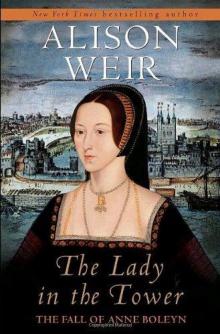 The Lady in the Tower: The Fall of Anne Boleyn
The Lady in the Tower: The Fall of Anne Boleyn Six Wives of Henry VIII
Six Wives of Henry VIII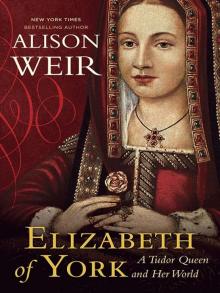 Elizabeth of York: A Tudor Queen and Her World
Elizabeth of York: A Tudor Queen and Her World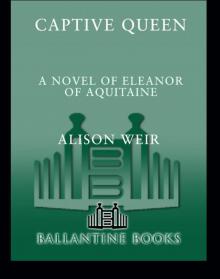 Captive Queen
Captive Queen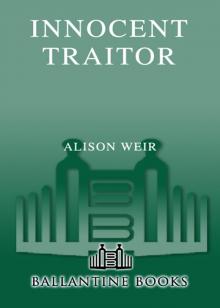 Innocent Traitor
Innocent Traitor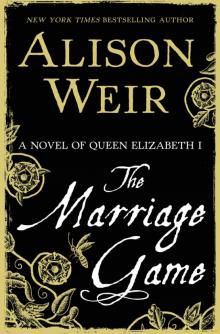 The Marriage Game
The Marriage Game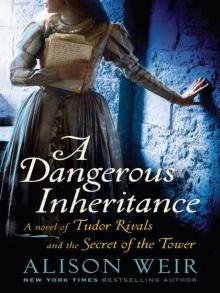 A Dangerous Inheritance
A Dangerous Inheritance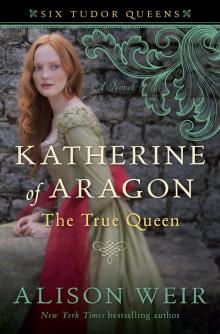 Katherine of Aragón: The True Queen
Katherine of Aragón: The True Queen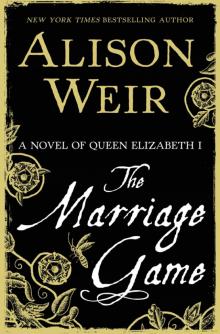 The Marriage Game: A Novel of Queen Elizabeth I
The Marriage Game: A Novel of Queen Elizabeth I Princes in the Tower
Princes in the Tower Anne Boleyn: A King's Obsession
Anne Boleyn: A King's Obsession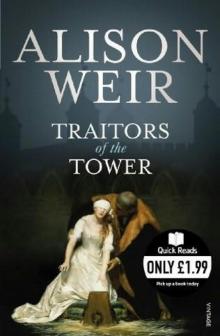 Traitors of the Tower
Traitors of the Tower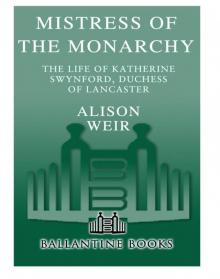 Mistress of the Monarchy: The Life of Katherine Swynford, Duchess of Lancaster
Mistress of the Monarchy: The Life of Katherine Swynford, Duchess of Lancaster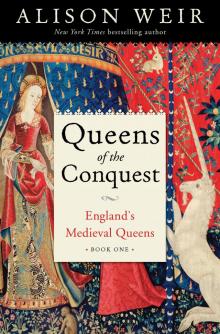 Queens of the Conquest: England’s Medieval Queens
Queens of the Conquest: England’s Medieval Queens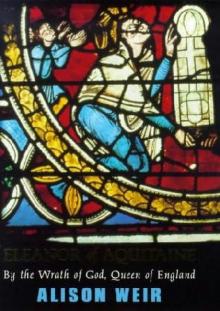 Eleanor of Aquitaine: A Life
Eleanor of Aquitaine: A Life Mary, Queen of Scots, and the Murder of Lord Darnley
Mary, Queen of Scots, and the Murder of Lord Darnley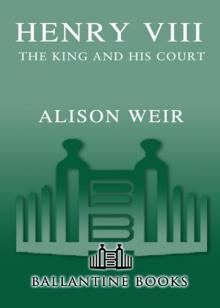 Henry VIII: The King and His Court
Henry VIII: The King and His Court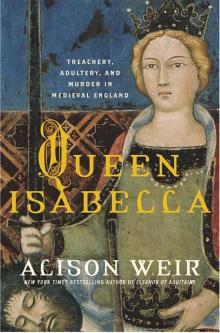 Queen Isabella: Treachery, Adultery, and Murder in Medieval England
Queen Isabella: Treachery, Adultery, and Murder in Medieval England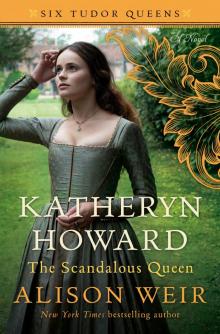 Katheryn Howard, the Scandalous Queen
Katheryn Howard, the Scandalous Queen Arthur- Prince of the Roses
Arthur- Prince of the Roses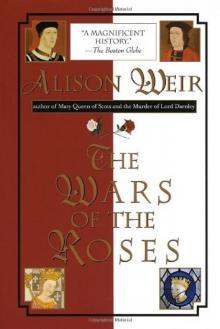 The Wars of the Roses
The Wars of the Roses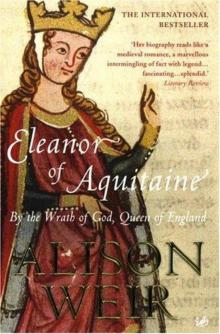 Eleanor of Aquitaine: By the Wrath of God, Queen of England
Eleanor of Aquitaine: By the Wrath of God, Queen of England Mary Boleyn: The Great and Infamous Whore
Mary Boleyn: The Great and Infamous Whore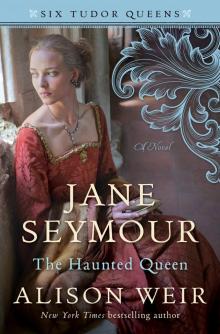 Jane Seymour: The Haunted Queen
Jane Seymour: The Haunted Queen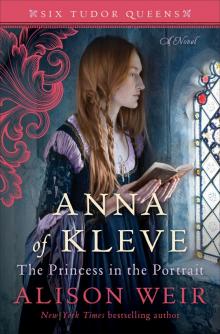 Anna of Kleve, the Princess in the Portrait
Anna of Kleve, the Princess in the Portrait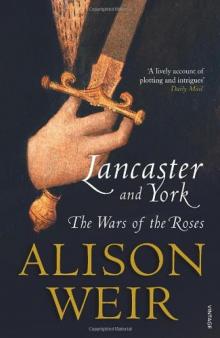 Lancaster and York: The Wars of the Roses
Lancaster and York: The Wars of the Roses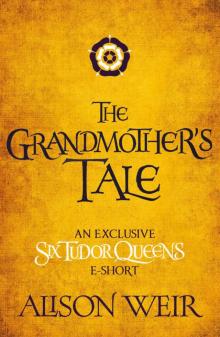 The Grandmother's Tale
The Grandmother's Tale The Princess of Scotland (Six Tudor Queens #5.5)
The Princess of Scotland (Six Tudor Queens #5.5)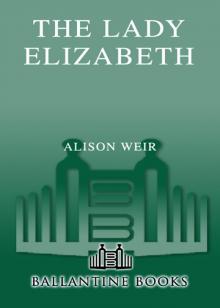 The Lady Elizabeth
The Lady Elizabeth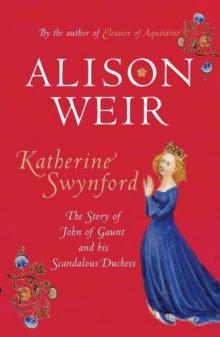 Katherine Swynford: The Story of John of Gaunt and His Scandalous Duchess
Katherine Swynford: The Story of John of Gaunt and His Scandalous Duchess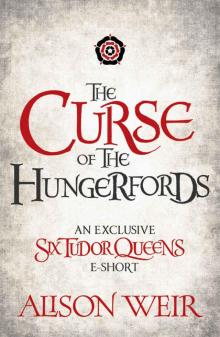 The Curse of the Hungerfords
The Curse of the Hungerfords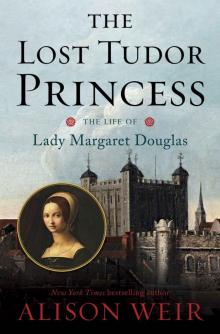 The Lost Tudor Princess: The Life of Lady Margaret Douglas
The Lost Tudor Princess: The Life of Lady Margaret Douglas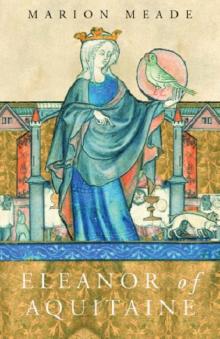 Eleanor of Aquitaine
Eleanor of Aquitaine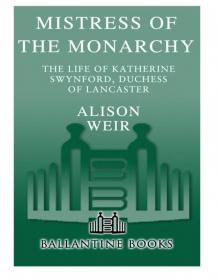 Mistress of the Monarchy
Mistress of the Monarchy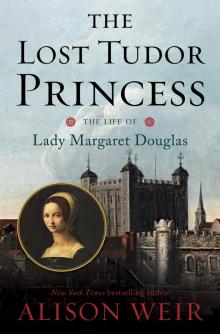 The Lost Tudor Princess
The Lost Tudor Princess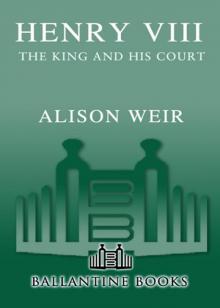 Henry VIII
Henry VIII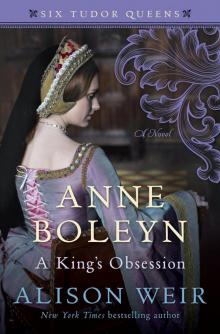 Anne Boleyn, a King's Obsession
Anne Boleyn, a King's Obsession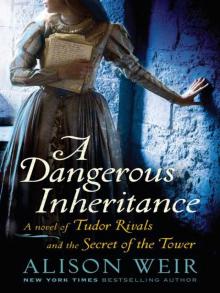 A Dangerous Inheritance: A Novel of Tudor Rivals and the Secret of the Tower
A Dangerous Inheritance: A Novel of Tudor Rivals and the Secret of the Tower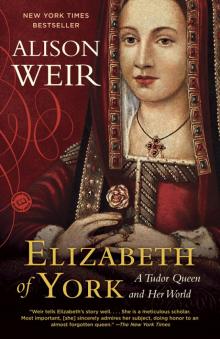 Elizabeth of York
Elizabeth of York Katherine of Aragon, the True Queen
Katherine of Aragon, the True Queen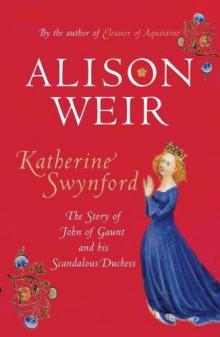 Katherine Swynford
Katherine Swynford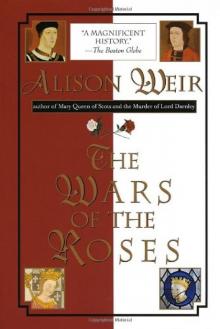 Wars of the Roses
Wars of the Roses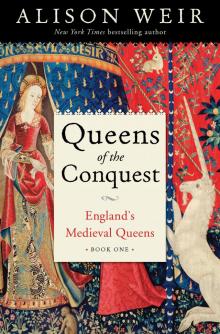 Queens of the Conquest
Queens of the Conquest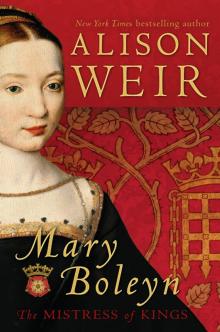 Mary Boleyn
Mary Boleyn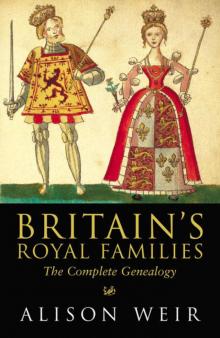 Britain's Royal Families
Britain's Royal Families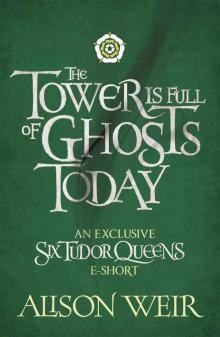 The Tower Is Full of Ghosts Today
The Tower Is Full of Ghosts Today Life of Elizabeth I
Life of Elizabeth I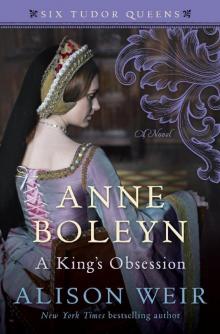 Anne Boleyn A King's Obssession
Anne Boleyn A King's Obssession Lancaster and York
Lancaster and York Jane Seymour, the Haunted Queen
Jane Seymour, the Haunted Queen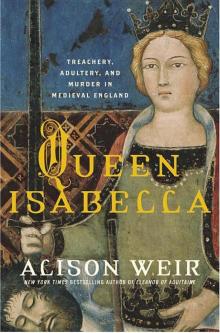 Queen Isabella
Queen Isabella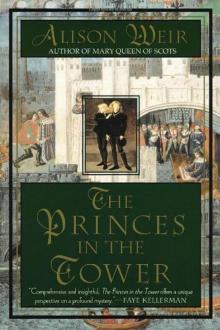 The princes in the tower
The princes in the tower